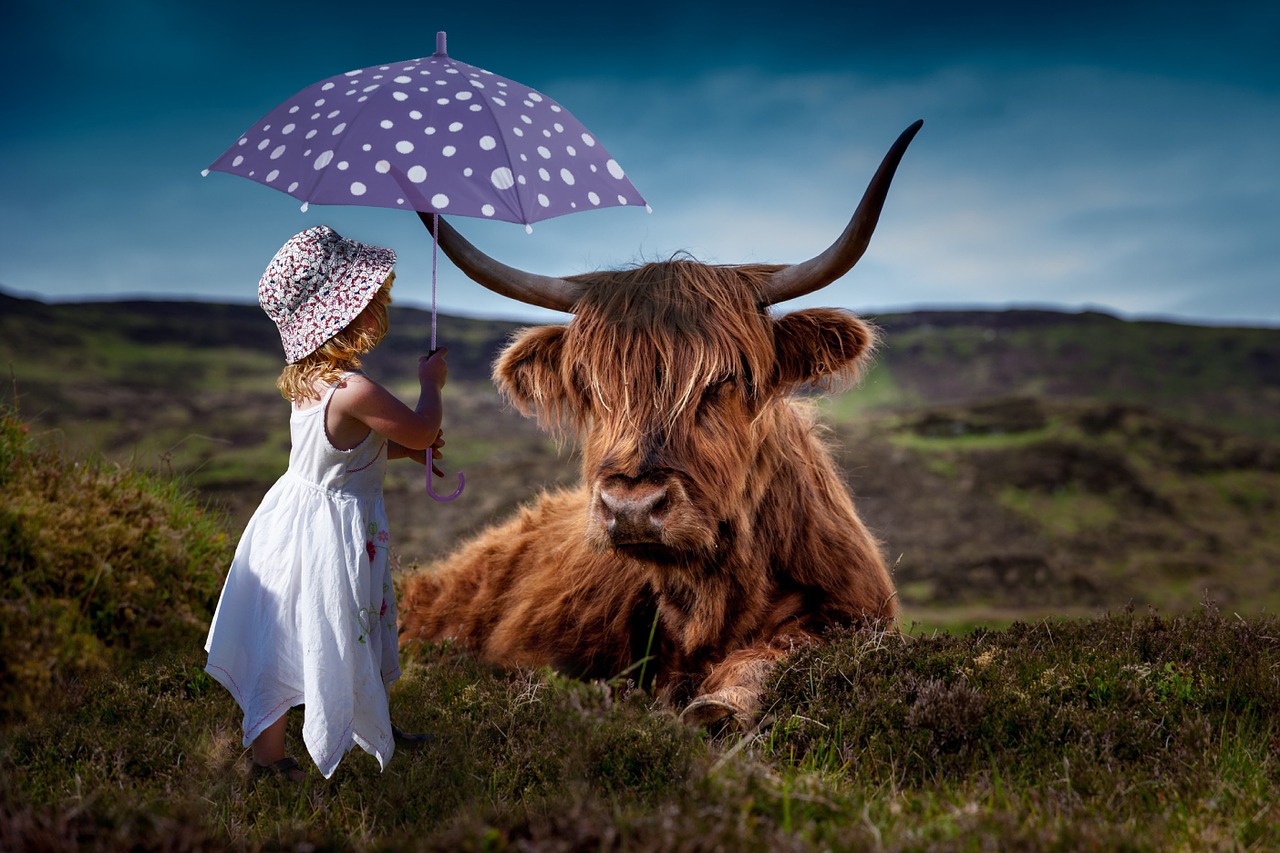
Does your child have an imaginary friend? Did you have imaginary friends as a child?
Many parents worry when children live in fantastical worlds with imaginary friends. These friends can be human or imaginative creatures. Sometimes parents are even concerned imaginary friends are an early warning sign for serious mental health illnesses like schizophrenia.((http://nymag.com/scienceofus/2016/05/parents-relax-imaginary-friends-are-a-totally-normal-part-of-being-a-kid.html))
Classic Psychological View on Imaginary Friends
Until the 1990s, child psychologists thought imaginary friends were a sign of a child who needed help from a strong introverted personality.((https://www.theglobeandmail.com/life/parenting/once-stigmatized-childhood-imaginary-friends-are-now-linked-to-a-host-of-benefits-including-heightenedcreativity/article28048417/))
Famed child psychologist Dr. Benjamin Spock advised parents of the 1940s in his book Dr. Spock’s Baby and Child Care:
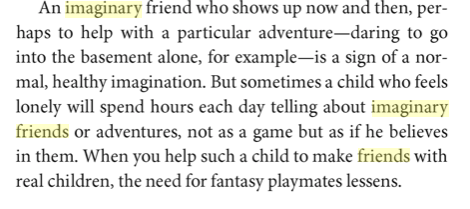
He went on to advise if the imaginary friend persisted past the age of four, “a child psychiatrist, child psychologist or other mental-health counsellor should be able to find out what they are lacking.”((https://www.theglobeandmail.com/life/parenting/once-stigmatized-childhood-imaginary-friends-are-now-linked-to-a-host-of-benefits-including-heightenedcreativity/article28048417/))
Another famous child psychologist Jean Piaget, famous for his theory on cognitive development, was also concerned about children’s imaginary friends. Piaget thought children were incapable of imagination calling it “no more than a lack of coherence”. In Play, Dreams, and Imitation in Childhood, he writes:
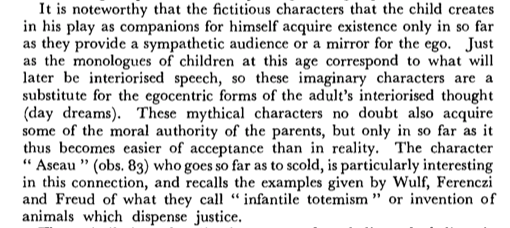
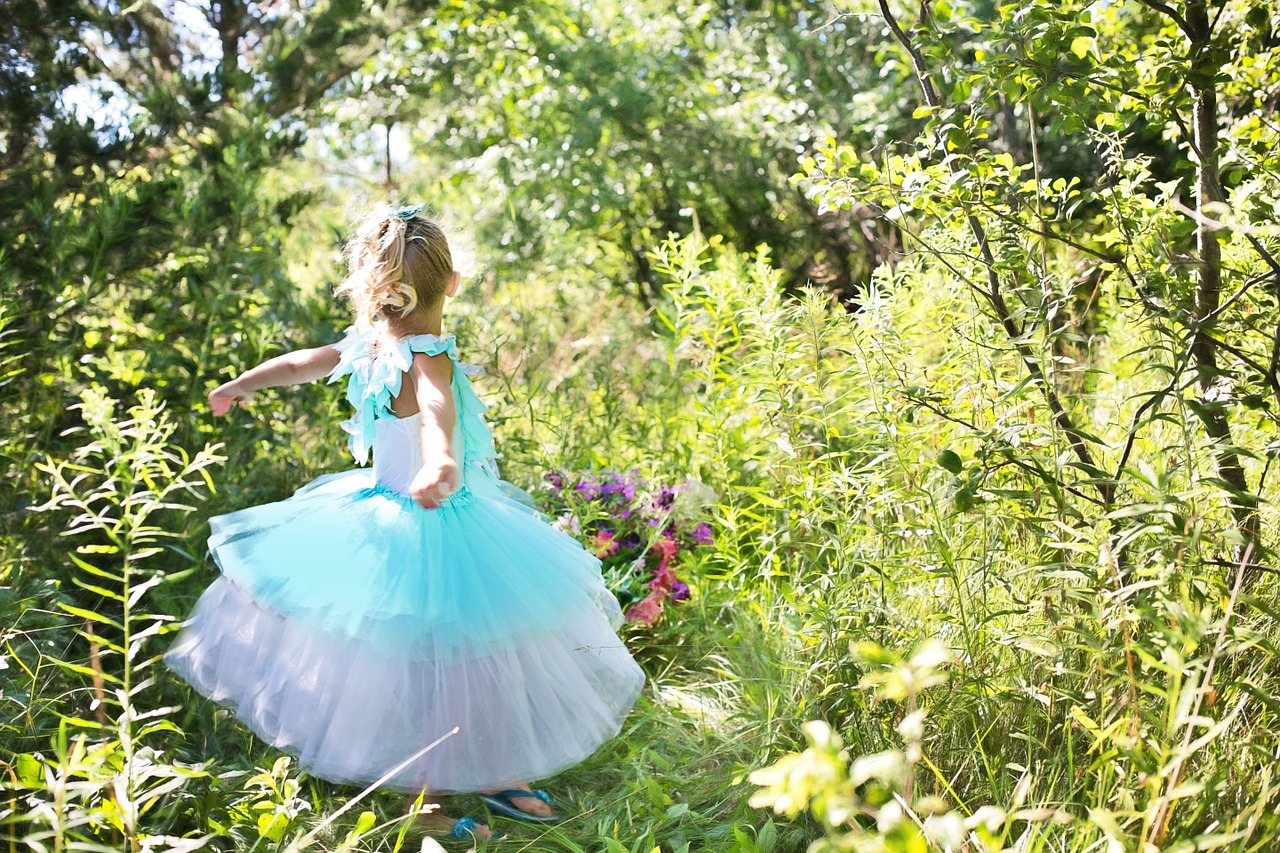
Current Research on Imaginary Friends
Recent research has found quite the opposite to be true. According to the Globe and Mail:
In a study published in the Creativity Research Journal in 2005, researchers found that children who had imaginary companions were more creative than their imaginary-friendless peers.
And in 2010, Evan Kidd, a researcher at Australian National University, and colleagues found that adults who had imaginary friends as children scored higher on creativity tests than those who did not…
What’s more, Kidd and colleagues also found that adults who had an imaginary companion in childhood scored higher on “absorption” tests: “They’re more likely to lose themselves in things like novels, and have a more imaginative life as adults,” he explains.((https://www.theglobeandmail.com/life/parenting/once-stigmatized-childhood-imaginary-friends-are-now-linked-to-a-host-of-benefits-including-heightenedcreativity/article28048417/))
Creating an imaginary friend is part of normal child development for some children. Play is important to child development. Social dramatic play may include imaginary friends. This can lead to later creativity, theorize researchers.((https://www.theglobeandmail.com/life/parenting/once-stigmatized-childhood-imaginary-friends-are-now-linked-to-a-host-of-benefits-including-heightenedcreativity/article28048417/))Yale psychologist Dorothy Singer explains in the New York Magazine:
“[This] is really a forerunner of symbolic or pretend play. It shows that a child is curious and is ready to imitate sounds and actions of the adults around him,” a skill which can later morph into the development of an entirely new persona.((http://nymag.com/scienceofus/2016/05/parents-relax-imaginary-friends-are-a-totally-normal-part-of-being-a-kid.html))
In addition to the creativity benefits, having an imaginary friend may lead to social benefits as well, quite the opposite of what earlier child psychologists thought. University of Oregon psychologist Marjorie Taylor discovered a correlation between children with imaginary friends and enhanced social skills:
They’re sociable kids, they’re less shy than other children. There are some studies that show they have enhanced social understanding — they’re better able to take the perspective of someone else in real life.((http://nymag.com/scienceofus/2016/05/parents-relax-imaginary-friends-are-a-totally-normal-part-of-being-a-kid.html))
In 2013, UK researchers found having imaginary friends “spurs the development of an inner dialogue that children can use to talk themselves through challenging tasks now and later as adults.” These findings were corroborated by Dr. Kidd. Patrick Wanis Ph.D. writes:
He found that children ages 3 – 5 with imaginary friends were successful at “Theory of Mind” tasks. Theory of mind is the ability to attribute mental states – beliefs, intents, desires, pretending, knowledge, etc. to oneself and others, and to understand that others have beliefs, desires, and intentions that are different from one’s own. In other words, children with imaginary friends could easily take another person’s perspective; they could switch perspectives, have a better understanding of other people’s minds and put themselves in other people’s shoes. This is directly attributable to the fantasy and role-playing that a child engages in when having an imaginary friend (creating a dialogue, personality, story, setting and world for the imaginary friend.)((https://www.patrickwanis.com/imaginary-friends-play-anxiety-children/))
Furthermore, current research has found extroverts, not introverts, are more likely to have imaginary friends, overturning Dr. Spock’s theory.((https://www.patrickwanis.com/imaginary-friends-play-anxiety-children/))
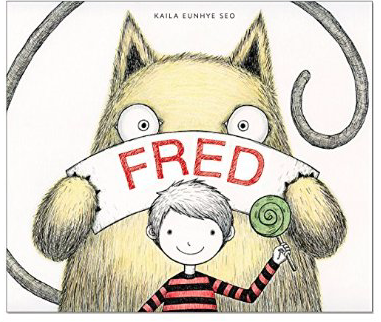 We were sent a delightful book that is the story of one child’s imaginary friends. Fred by
We were sent a delightful book that is the story of one child’s imaginary friends. Fred by
”In a town handsomely drafted in black ink, a boy named Fred ‘was able to see and believe in things… that others could not.’ Monsters, namely. Seo, a Korean artist making her children’s book debut, creates a slew of shaggy, wide-eyed creatures, colored in pale yellows and blues, who aren’t just benevolent, but downright helpful (‘Sometimes they acted like the wind and moved branches out of the way for people. And sometimes they acted like shade and kept people cool on hot summer days.’) In a development that will be familiar to anyone who has seen ”Toy Story” or sung ”Puff, the Magic Dragon,” Fred eventually trades these smiley, friendly furballs for human companions, growing up to be someone who ‘ate the same things everyday for breakfast, lunch, and dinner’ and ‘lived each day very much like the day before.’ It’s a story that tugs at heartstrings (it’s tough to watch the crestfallen monsters fade to black and white as Fred forgets about them), but Seo’s upbeat ending affirms the loyalty of this hirsute and utterly devoted crew. Ages 3-7.” –Publishers Weekly
Her words kept circling in Fred’s head-around and around and around.
Slowly a light began to fill his heart-
the part of his heart that had been
dark for a long time.
And he knew he was not alone after all.
The story reminds me of a cross between Where the Wild Things Are and the Giving Tree. Simple text and beautiful illustrations take us on Fred’s journey from imaginary friends in toddlerhood to real friends in school to the return of imaginary friends as an adult. I really enjoyed reading it.
Photo credit: ATDSPHOTO / Pixabay
Leave a Reply